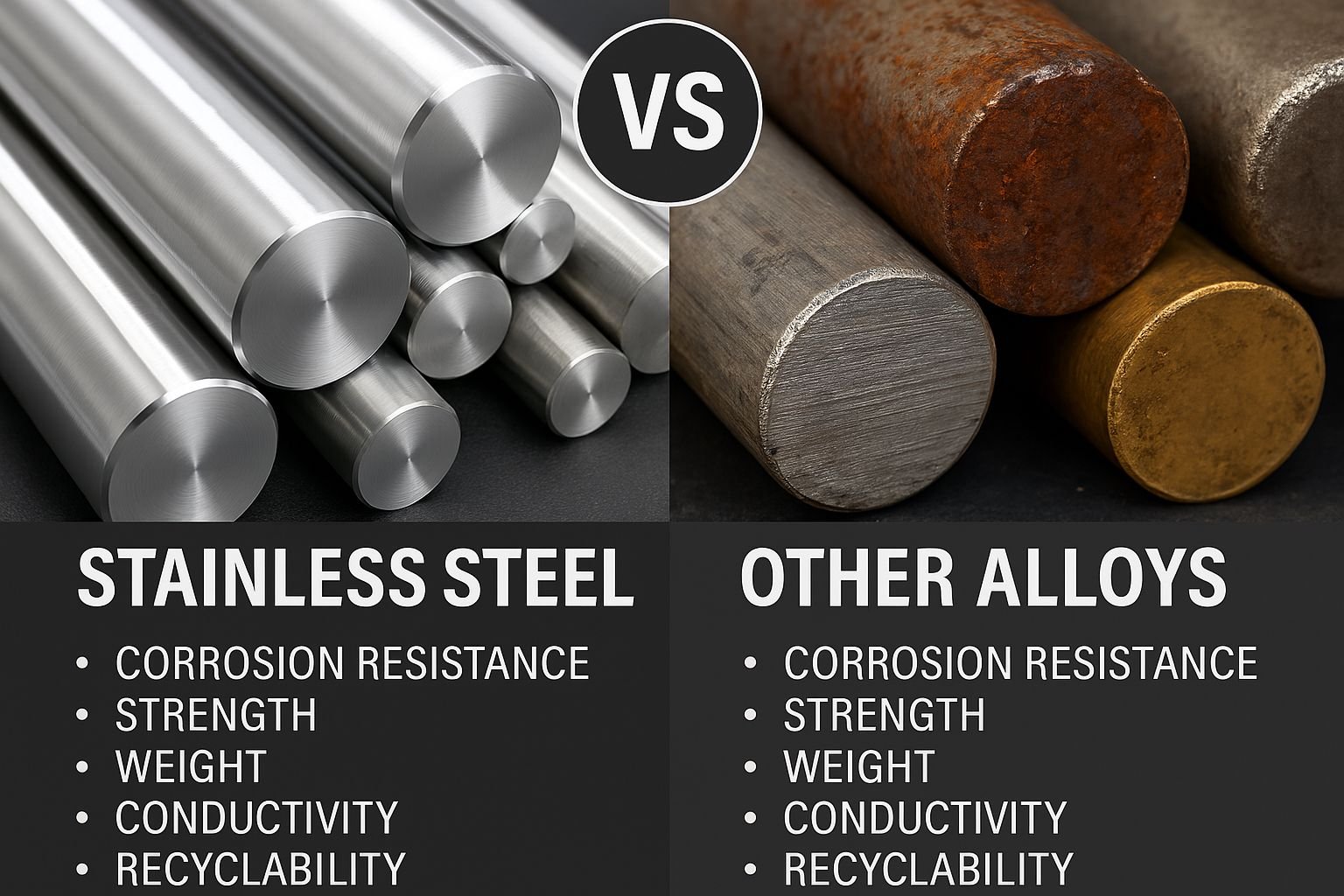Stainless steel stands out among alloys for its corrosion resistance, strength, and versatility. Sakshi Chhabria emphasized that understanding its differences from titanium, aluminium, and carbon steel helps in choosing the right material.
Five Important Differences Between Stainless Steel and Other Alloys You Should Be Aware of:
Although stainless steel is a common material, there are other alloys that can be used. Depending on their particular needs, many industries use metal alloys, including carbon steel, titanium, and aluminium. Manufacturers, engineers, and consumers may choose materials more wisely if they know how stainless steel stacks up against other alloys. You should be aware of these five important comparisons.
- Resistance to corrosion
Because of the chromium content, which creates a protective oxide layer, stainless steel has a high resistance to corrosion, which is one of its greatest benefits. Although titanium and aluminium also resist corrosion well, they could not function as well in conditions that are very acidic or chloride-rich. Carbon steel, on the other hand, needs coatings or treatments to stop corrosion because it is extremely prone to rust.
- Strength and Durability
Stainless steel is a popular material for heavy-duty applications like construction, medical equipment, and automobile manufacture because of its exceptional strength and durability. Titanium is perfect for medical and aeronautical implants since it is lighter and even stronger. Carbon steel is robust but does not withstand corrosion; thus, it needs to be maintained over time. Aluminium is lighter but weaker.
- Density and Weight
Stainless steel weighs more than many other alloys, despite its strength and durability. Because aluminium and titanium are significantly lighter, they are perfect for uses where weight reduction is essential, including in sporting equipment, cars, and aeroplanes. Like stainless steel, carbon steel is heavy, but it is frequently used for structural purposes where weight is less of an issue.
- Price and Accessibility
In general, stainless steel costs less than titanium but more than carbon steel. Titanium is the most costly material because of its strength, resistance to corrosion, and intricate refining process, although aluminium is frequently more affordable for lightweight applications.
- Workability and Machinability
The way that various alloys react to machining and manufacturing procedures varies. Aluminium is popular in businesses that need rapid manufacture because metal is simple to cut, weld, and shape. Because of their strength and durability, titanium and stainless steel are more difficult to manufacture and call for specific equipment. Compared to stainless steel, carbon steel is simpler to cut and weld, but it needs to be protected from rust.
Conclusion
Factors such as corrosion resistance, strength, weight, cost, and machinability influence the decision between stainless steel and other alloys. Carbon steel, titanium, and aluminium all offer benefits for particular uses, but stainless steel is still a strong and adaptable option. Knowing these distinctions guarantees that the appropriate material is used for the appropriate task.





